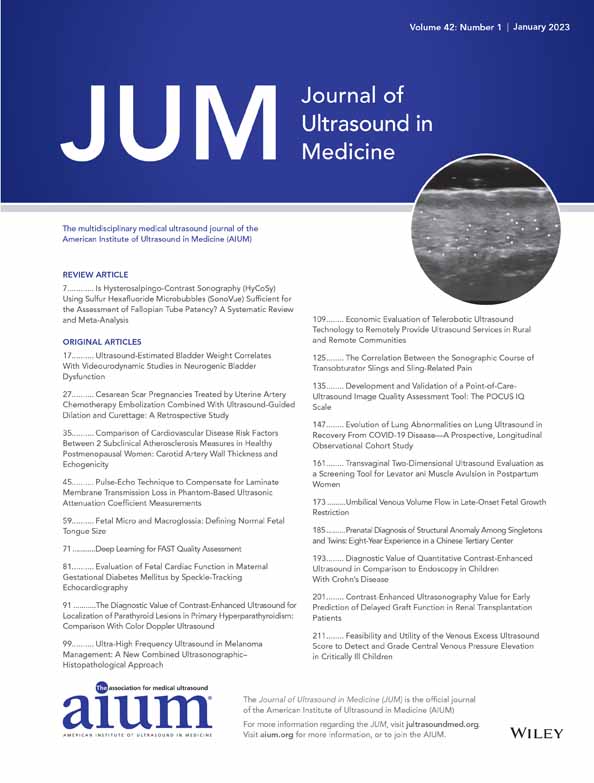Cesarean Scar Pregnancies Treated by Uterine Artery Chemotherapy Embolization Combined With Ultrasound-Guided Dilation and Curettage
A Retrospective Study
This work was supported by a grant from the Shanghai Traditional Chinese Medicine Research Fund Project (grant number: ZY3-CCCX-3-3020).
All the authors declare no conflict of interest.
Abstract
Objectives
To explore the effect of cesarean scar pregnancy (CSP) treatment by comparing uterine artery chemotherapy embolization (UACE) combined with dilation and curettage (D&C) with or without ultrasound guidance.
Methods
CSP patients treated with UACE combined with D&C from January 2013 to December 2020 at Shuguang Hospital, affiliated to Shanghai University of Traditional Chinese Medicine were included in this retrospective study. The patients were divided into groups A and B according to whether D&C was guided by ultrasound.
Results
Forty-eight patients with CSP diagnosed by transvaginal ultrasound were included in this study, whose gestational age was <8 weeks. There were no significant differences in the basic clinical characteristics of the two groups. The success rates of the 2 groups were no significant difference, 100% (27/27) in group A and 85.7% (18/21) in group B. The maximal intraoperative blood loss of group A was 100 mL and that of group B was 150 mL. There was no uterine perforation during the operation. Ultrasound guidance can shorten the D&C operation time, reduce intraoperative bleeding during D&C, and decrease the residual rate of trophoblastic tissue after D&C.
Conclusions
Ultrasound guidance can improve the safety and efficiency of UACE combined with D&C in the treatment of CSP and reduce its complications. We believe it is an optimal treatment for CSP patients who do not plan to have children in the future.




